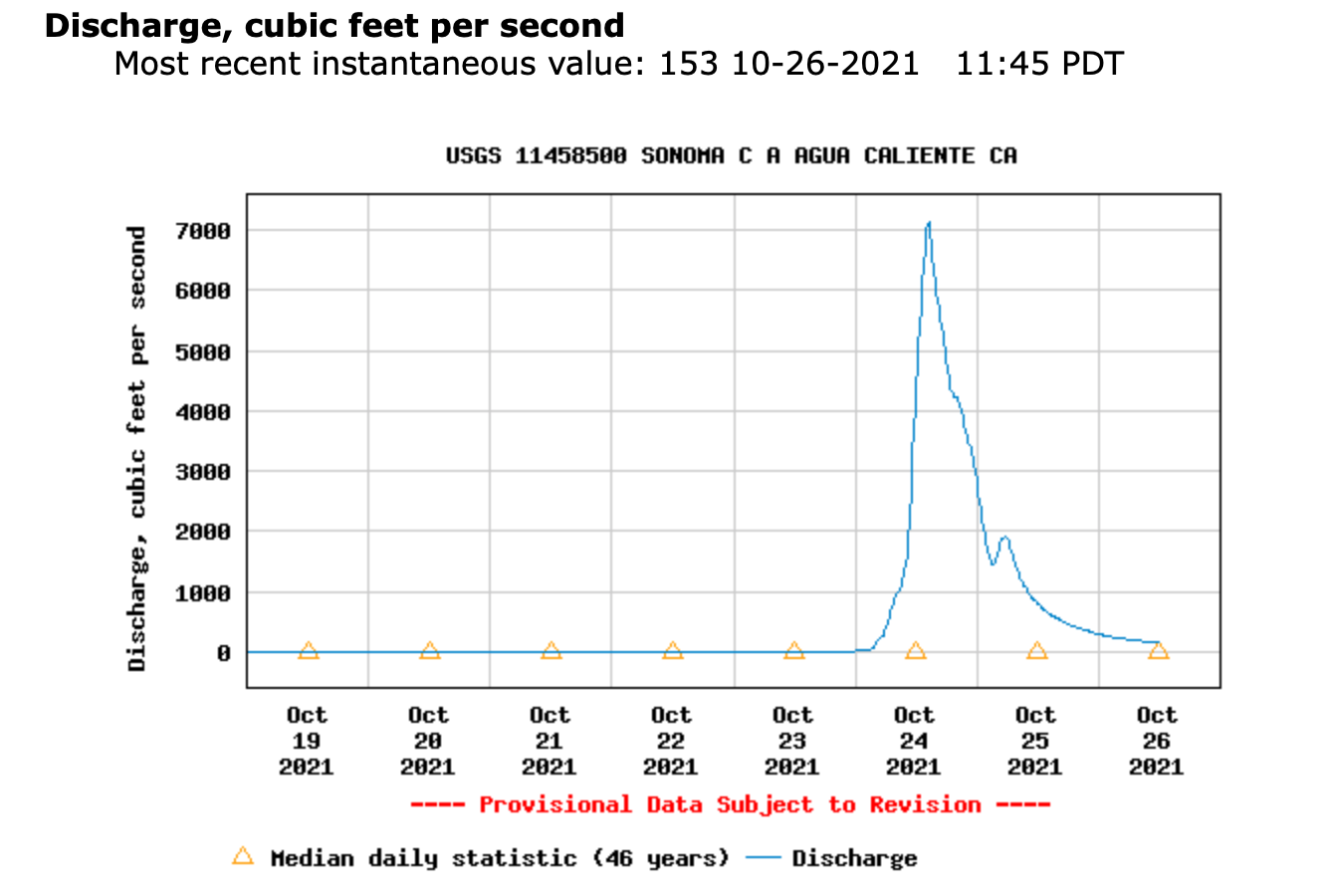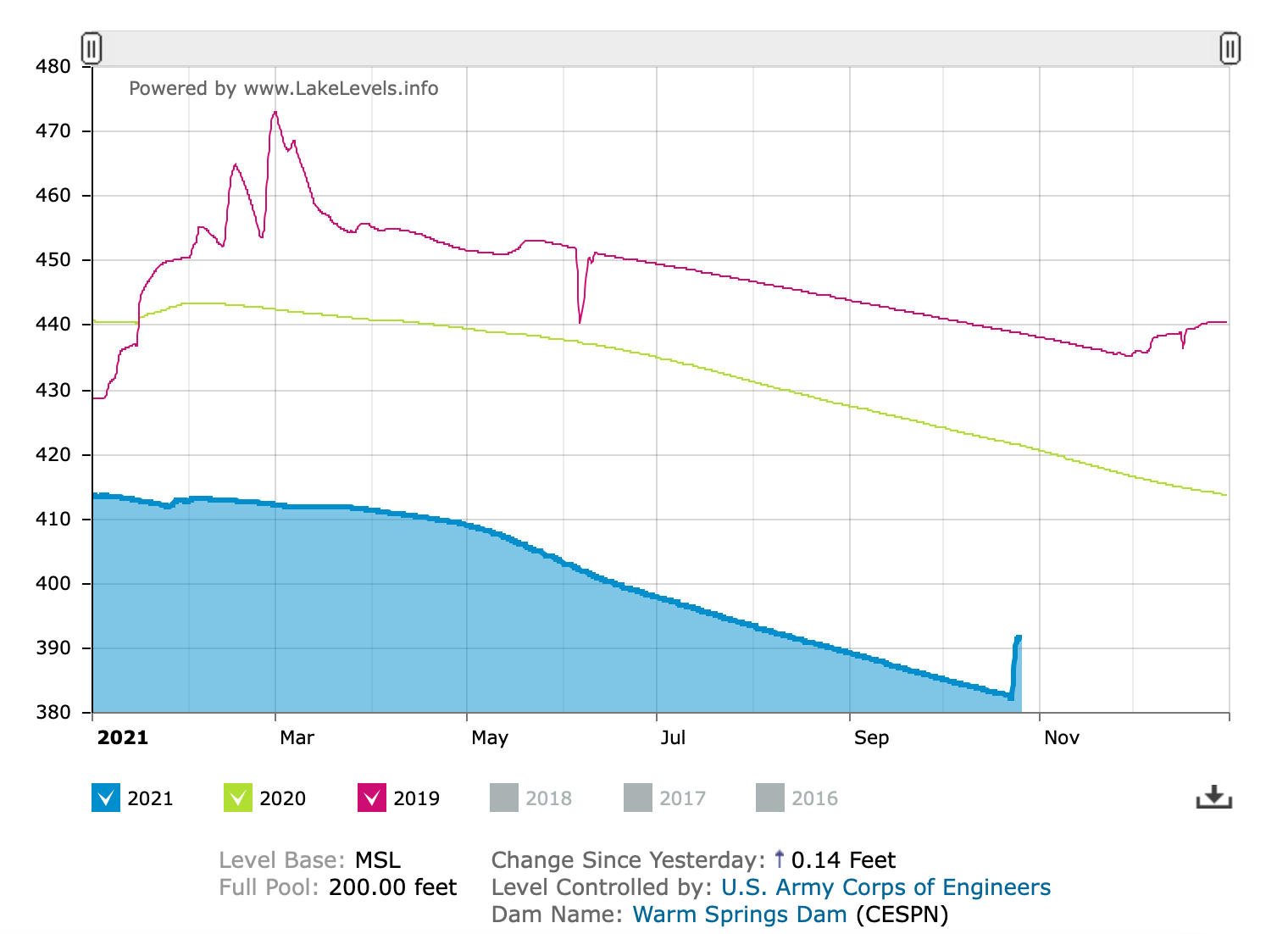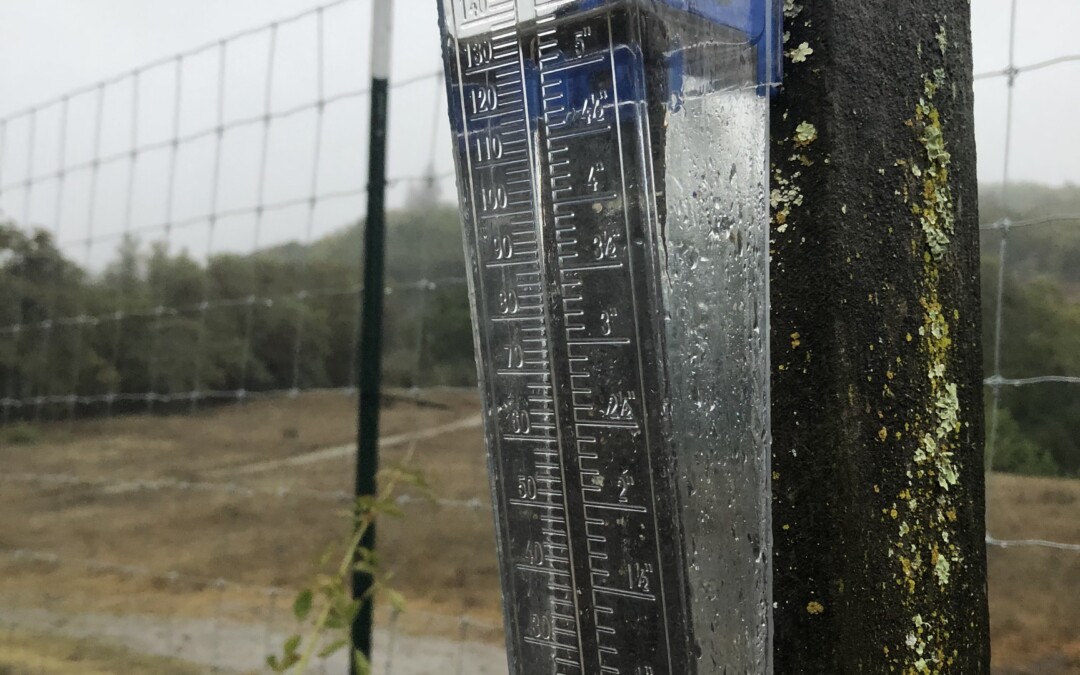From bone-dry creek beds to rushing water in just one wet week – it’s been a turbulent ride of literal highs and lows for our watershed in the past seven days.
Last Sunday’s storm was the biggest in our area’s history in terms of volume of water over such a short amount of time. When you look at the numbers it makes quite the splash.
On the Sonoma Developmental Center campus where the Sonoma Ecology Center is located we received a total of 12 inches in 24 hours – when you factor in the 2.75 inches of rain that we measured prior to the Sunday, October 24 weather event we’re clocking in at 14.75 inches for this year. This is more than we received in precipitation all of last winter, all in just one week!
The huge fluctuations in streamflow which you can see represented below by a USGS streamflow graph of Sonoma Creek at the Agua Caliente Bridge aren’t a typical start to the wet season. In a couple of days Sonoma Creek went from running at 0 CFS (cubic feet per second) to well over 6,000 CFS. That’s a big change in a short amount of time.

The fact that our creeks filled up with water so fast starting from such a considerable deficit played a major part in why we saw less flooding than one would expect from such a serious weather event with such high rates of rainfall. Much of the initial precipitation coming into our watershed at the beginning of the week was able to soak into the ground – taking longer for significant runoff to begin. Had a downpour like this past weekend occurred with a couple of wet months worth of water in the creeks, the stage would have been set for heavy flooding throughout the area. Sonoma Valley experienced mostly high water with minor flooding. One such location of flooding was at the concrete dam at Larson Park which was underwater by midday Sunday (pictured below).

Sonoma Creek flooding at Larson Park
The National Weather Service reports that in our region we are at nine times the normal amount of rain for this point in the season, quite a start for late October!
From the perspective of the natural world, things have started to shift. Meadow areas are greening up, and stressed vegetation now has at least a reprieve from the crushing drought of the last two years. Hopefully enough water will remain in our creeks through the remainder of the wet season for fish to run and for water tables to start to replenish.
For the human inhabitants of our ecosystem, unfortunately, our relationship with drought has not shifted as much, though the landscape around us looks greatly altered from the weekend’s deluge. When we review data from the reservoirs that supply water to most homes and businesses in the Valley, there has been little change in water storage levels, even though we received many months worth of rain in a single week. In the below graph of Lake Sonoma you can see the water levels from 2019, 2020, and 2021. 2021 (indicated by the blue line) already begins at a lower point than in prior years. Our “Megastorm” weekend is represented by the spike at the end of October. As is clear here, we humans have a long way to go before we’re out of the drought.

There’s always hope (and more weather if we can believe the forecasts) on the horizon. While we wait for more rain, now is a great time to consider what you can do on a small scale in your own backyard. Next time it’s raining, don’t just hide out inside where it’s warm and dry. Get on your rain gear and take a walk around to see where the water is flowing. Being aware of what water does when it’s raining where you live can help you to better understand what to do when flooding is a threat, and how to make changes to your landscape that can help when water is scarce.


From left to right: Sonoma Creek at Boyes Bridge and above the Verano Bridge
If you want to learn about how to retain rainfall and keep water in the ground rather than letting it run off, the Occidental Arts & Ecology Center has an excellent guide to stormwater management. You can learn more here.
For those interested in harnessing some of that useful rainwater, you’ll be thrilled to know that SEC’s Senior Scientist and Research Program Manager, Steve Lee’s ~65,000 gallon rainwater storage system was completely full by the end of Sunday’s weather event. That system will provide his property with water without pulling from our underfilled reservoirs. Steve is available for consultation on effective rainwater catchment systems at steve@sonomaecologycenter.org
To contact our team about projects or to request our services, please email steve@sonomaecologycenter.org or call 707-996-0712 ext. 116.

